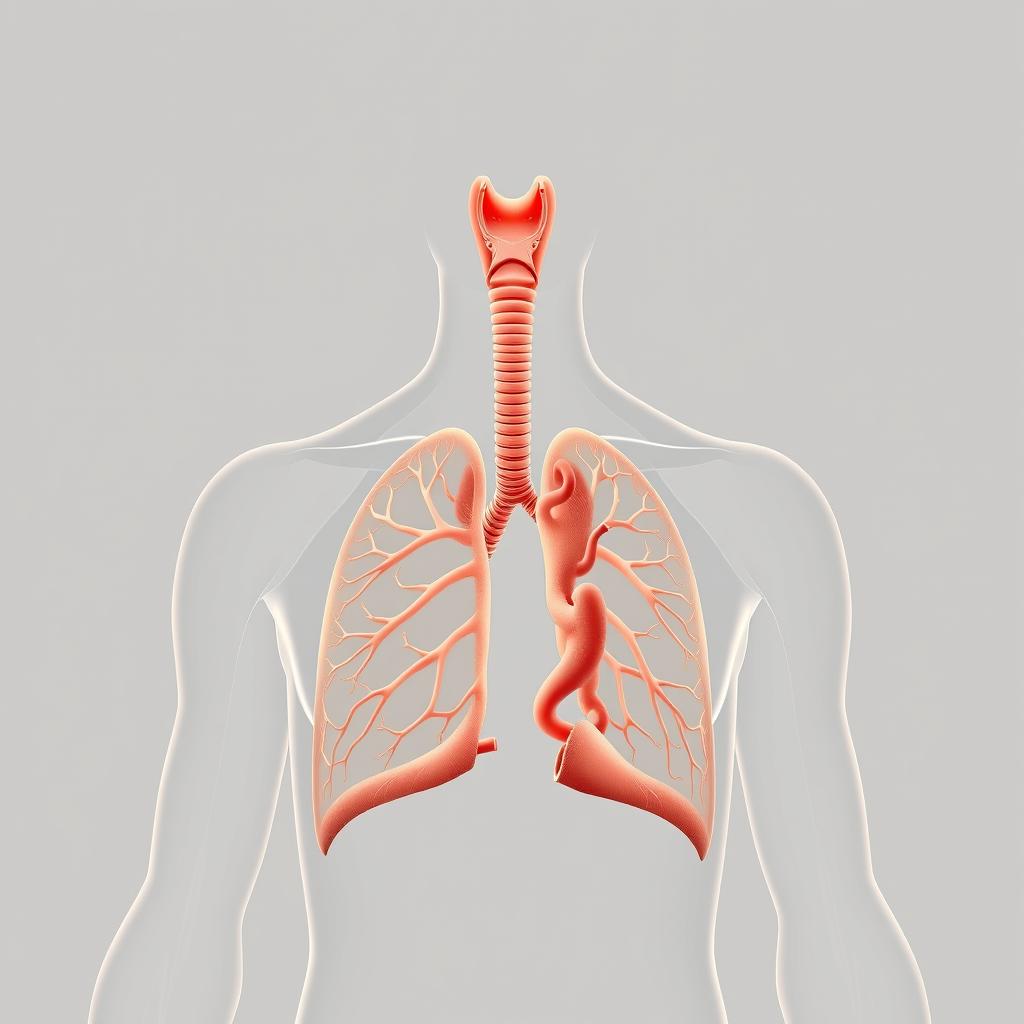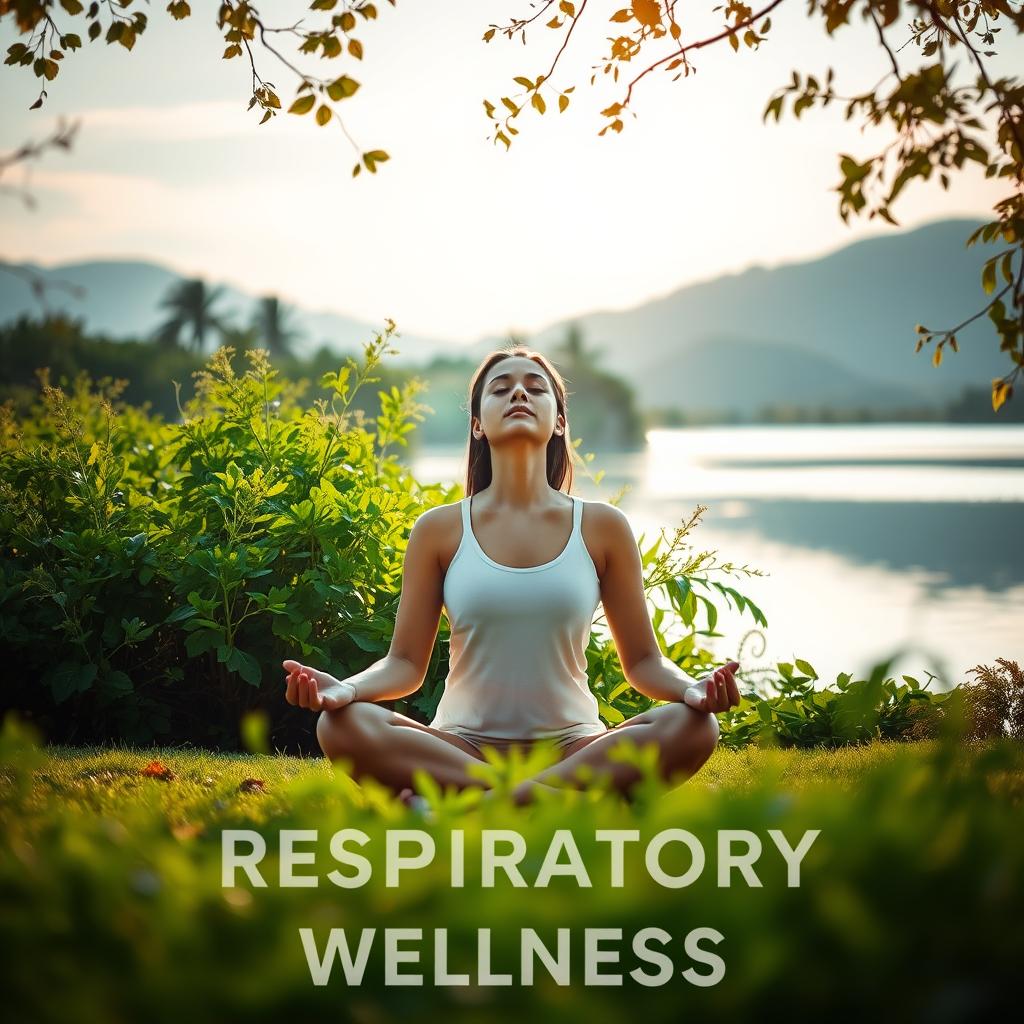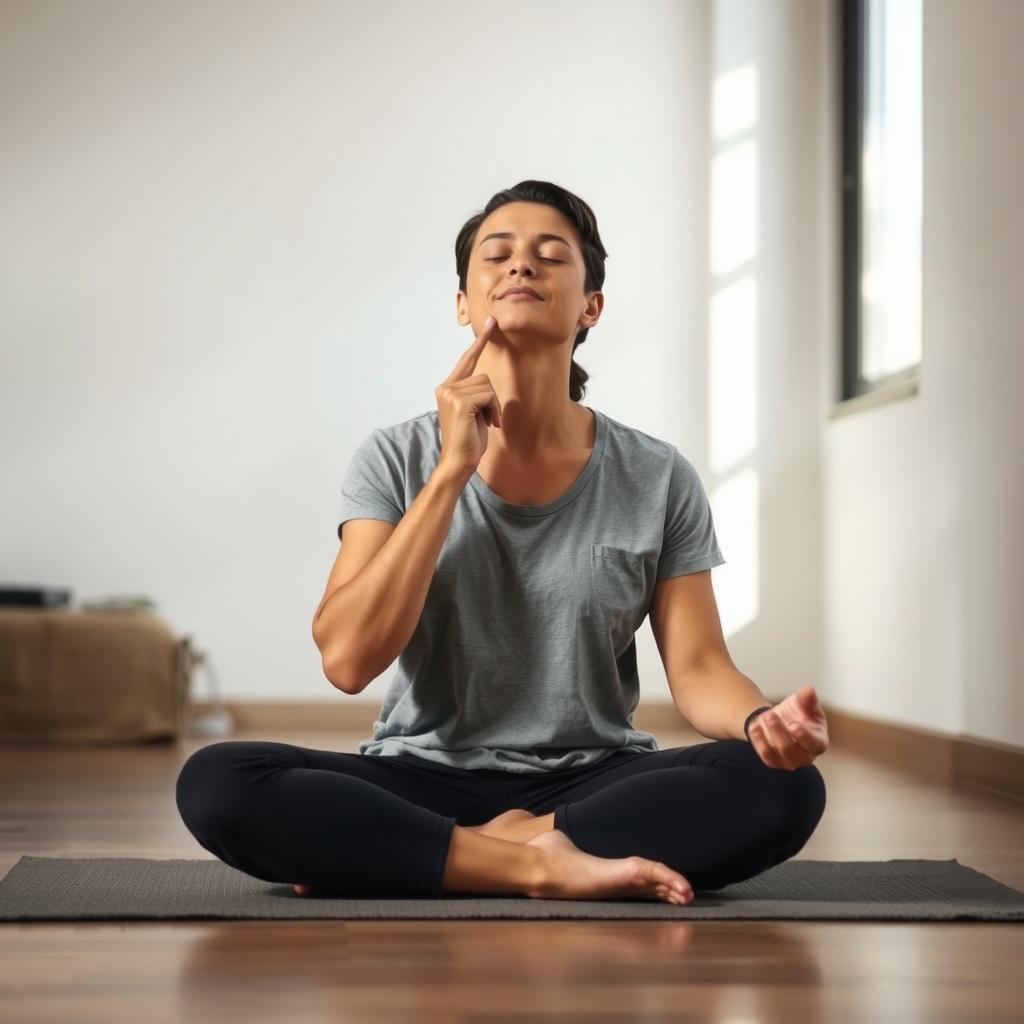Breathing is something we do without thinking. We breathe in and out all the time. But, mindful breathing can really change how we feel.
Using purposeful breathing techniques can make us feel better. It can lower stress and boost our health. Let’s dive into how breathing can improve our lives.
Key Takeaways
- Mindful breathing can reduce stress levels.
- Purposeful breathing techniques can improve overall health.
- Adopting healthy breathing habits can enhance well-being.
- Breathing exercises can be a simple yet effective tool.
- Proper breathing techniques can be learned and practiced.
The Science Behind Breathing and Its Impact on Overall Health
Breathing is more than just a basic function. It’s a key to better health. By learning how breathing affects us, we can use it to improve our wellbeing.
How Breathing Affects Your Nervous System
Breathing directly impacts our nervous system. Mindful breathing practices can calm it down, reducing stress and anxiety. Proper breathing activates our relaxation system, lowering stress.
The Connection Between Breathing and Stress Response
Our breathing can either add to or reduce stress. Proper breathing techniques slow our heart rate and lower blood pressure. Robert J. Snyder, a respiratory therapist, says these techniques improve heart and lung function, boost energy, and enhance sleep.
Short-term Effects of Proper vs. Improper Breathing
Good breathing reduces stress and increases oxygen. Bad breathing can raise heart rate and blood pressure.
Long-term Health Consequences of Breathing Patterns
Bad breathing can cause serious problems like chronic stress and heart disease. But, breathwork exercises and mindful breathing practices can help. They improve respiratory wellness and overall health.
| Breathing Pattern | Short-term Effects | Long-term Consequences |
|---|---|---|
| Proper Breathing | Reduced stress, increased oxygenation | Improved mental wellness, better sleep |
| Improper Breathing | Increased heart rate, blood pressure | Chronic stress, anxiety disorders, cardiovascular disease |
Understanding breathing’s science is the first step to better habits. Adding breathwork exercises and mindful breathing practices to our day can greatly improve our health.
My Journey to Discovering the Power of Proper Breathing
My journey to understand the importance of proper breathing started with personal struggles. For years, I battled with anxiety and stress. These issues showed up as a rapid heartbeat and shortness of breath. It was when I began practicing diaphragmatic breathing that I saw real improvements in my health.
Personal Struggles with Breathing Issues
I remember days when simple tasks left me out of breath. My breathing was shallow, and I felt like I was always running out of air. This was not only frustrating but also alarming, affecting my daily life and mental health.
How Changing My Breathing Changed My Life
Learning proper breathing techniques, especially diaphragmatic breathing, was a game-changer. It calmed my nervous system, reduced stress, and improved my breathing. I felt more grounded and in control of my body.
Key Moments of Transformation
One key moment was mastering diaphragmatic breathing. It was a breakthrough, as I could feel my belly rise and fall with each breath. This marked the start of a new chapter in my life, where I felt more connected to my body and better at managing stress.
| Breathing Technique | Benefits |
|---|---|
| Diaphragmatic Breathing | Reduces stress, improves respiratory health |
| Box Breathing | Enhances focus, calms the mind |
| 4-7-8 Breathing | Promotes relaxation, improves sleep |
By adding these techniques to my daily routine, I saw a big improvement in my health and well-being. It’s a journey I’m grateful for, and I’m excited to share more about it.
Understanding the Anatomy of Breathing
Breathing is linked to our health. It’s important to know how it works. Breathing is a complex process involving many parts of our body.
The Respiratory System Explained
The respiratory system helps us breathe. It includes the nose, mouth, throat, lungs, and diaphragm. The diaphragm is a key muscle that helps us breathe.
Knowing how this system works helps us understand the deep breathing benefits.

Common Breathing Misconceptions
Many people don’t breathe correctly. This can lead to health problems. Two big mistakes are breathing through the mouth instead of the nose and not knowing about carbon dioxide.
Nose vs. Mouth Breathing
Breathing through the nose is better. It filters, warms, and humidifies the air. During exercise, breathing in through the nose and out through the mouth helps.
The Role of Carbon Dioxide in Healthy Breathing
Carbon dioxide is important. It helps keep our body’s acid-base balance right. It’s also key for releasing oxygen to our tissues. Breathing correctly helps keep CO2 levels healthy.
| Breathing Technique | Benefits | Impact on CO2 Levels |
|---|---|---|
| Nose Breathing | Improved oxygenation, better air filtration | Maintains healthy CO2 levels |
| Diaphragmatic Breathing | Enhanced lung capacity, reduced stress | Optimizes CO2 expulsion |
| Mouth Breathing | Rapid gas exchange during intense exercise | Can lead to excessive CO2 loss |
Learning about breathing helps us breathe better. It improves our health and well-being.
Signs You Might Be Breathing Incorrectly
Many of us breathe incorrectly without knowing it. Our breathing affects our health. Bad breathing can cause many health problems.
Physical Symptoms of Poor Breathing Habits
Physical signs show if you’re breathing wrong. You might feel fatigue, shortness of breath, or tension in the shoulders or chest. Feeling tired or having trouble breathing can mean you’re not breathing right.

Mental and Emotional Indicators
Poor breathing can harm your mind and feelings too. You might feel anxiety, stress, or difficulty concentrating. Using the right breathing can help with these feelings.
Self-Assessment: Quick Breathing Check
Check how you breathe. Do you breathe through your nose or mouth? Is your breath deep or shallow? A quick check can show if you’re breathing right. Try deep breathing and see how you feel.
Being mindful of your breathing can make you healthier and happier.
The Health and Way of Breathing: A Comprehensive Overview
Conscious breathing is becoming more popular for its health benefits. It can change our health from the inside out. By controlling our breathing, we can greatly improve our wellbeing.
The Relationship Between Breathing and Physical Health
Breathing is key to our physical health. It affects our nervous system, heart rate, and blood pressure. Proper breathing techniques can improve blood flow and lower stress hormones. This helps our body fight off germs and viruses better.
Studies show that mindful breathing can boost our immune system. It reduces inflammation and helps our body handle stress better.

How Breathing Patterns Affect Mental Wellbeing
Our breathing patterns deeply affect our mental health. Conscious breathing is a powerful tool for managing stress and anxiety. By focusing on our breath, we can calm our minds and lessen anxiety and depression symptoms.
Breathing and Immune Function
Research shows that conscious breathing can strengthen our immune system. It reduces stress and boosts our body’s natural defenses. A recent study found that better blood flow and lower stress hormones help our body clear germs and viruses more efficiently.
“When we breathe correctly, we can significantly reduce our stress levels and improve our overall health.”
Respiratory Wellness Through Conscious Breathing
Conscious breathing practices improve our respiratory health and overall wellbeing. By doing breathwork exercises, we can better our lung function and live a healthier life.
To achieve respiratory wellness, we should make mindful breathing a part of our daily routine. This way, we can enjoy the benefits of better physical and mental health.
Diaphragmatic Breathing: The Foundation of Healthy Respiration
Learning diaphragmatic breathing can boost your respiratory health and overall wellbeing. This method, also known as belly breathing, uses the diaphragm. It’s key for healthy breathing.
Step-by-Step Guide to Diaphragmatic Breathing
Start by getting into a comfy position, like lying on your back or sitting with your back straight. Put one hand on your chest and the other on your belly. Breathe in deeply through your nose, letting your belly rise as your diaphragm goes down. Your chest should not move.
Breathe out slowly through your mouth, letting your belly fall as your diaphragm goes up. Do this a few times, feeling your belly expand and contract.

Common Mistakes and How to Avoid Them
A common error is letting your chest rise when you breathe in. This means you’re using the wrong muscles. To fix this, keep your hand on your chest to check if it moves. Another mistake is not breathing deeply enough, which can cut down on oxygen. Practice often to build the strength and coordination for good diaphragmatic breathing.
My Daily Diaphragmatic Breathing Practice
I’ve made diaphragmatic breathing a part of my daily routine, doing it for 10 minutes every morning. It’s not just improved my breathing; it’s also helped me handle stress better. By making it a habit, I’ve seen a big boost in my overall health.
By following these easy steps and watching out for common mistakes, you can build a strong diaphragmatic breathing practice. It will improve your breathing and make your life better.
Box Breathing: A Technique for Instant Calm
Managing stress is easier with box breathing. This simple method helps me stay calm and focused. It’s a key part of my daily routine.
The Science Behind Box Breathing
Box breathing, or square breathing, is a technique. You breathe in for 4 counts, hold for 4, breathe out for 4, and hold again for 4. This creates a “box” shape with your breath.
The science behind it is fascinating. It slows down your heart rate and promotes relaxation. It does this by stimulating the parasympathetic nervous system.

How to Practice Box Breathing Anywhere
Box breathing is versatile. You can do it anywhere, anytime, without anyone noticing. Start by sitting comfortably, inhaling for 4 counts, holding for 4, exhaling for 4, and holding again for 4. Repeat this several times.
Situations Where I Use Box Breathing
I use box breathing in many situations. It helps before important meetings and during stressful moments at work. It’s also great before bed to calm my mind.
The technique is so discreet. I can do it even in meetings or when I’m on the phone.
| Situation | Benefit of Box Breathing |
|---|---|
| Before Important Meetings | Reduces anxiety and boosts confidence |
| During Stressful Moments | Helps to regain calm and focus |
| Before Bed | Promotes relaxation and improves sleep quality |
4-7-8 Breathing: The Natural Tranquilizer
Discover the calming effects of the 4-7-8 breathing technique. It’s a simple yet powerful method for achieving relaxation. Known as the “Relaxation Breath,” it’s popular for reducing stress and promoting sleep.
Origins and Benefits
The 4-7-8 breathing method involves breathing in through the nose for a count of four. Then, hold the breath for a count of seven. Finally, exhale through the mouth for a count of eight. This pattern can slow down your heart rate and promote relaxation.
It has many benefits, including reduced anxiety, better sleep, and more oxygen in the body. By adding this proper breathing technique to your daily routine, you can experience these benefits.

My Personal Experience with 4-7-8 Breathing
I was introduced to the 4-7-8 breathing technique during a stressful time. I was skeptical at first but noticed a big drop in stress and an improvement in my well-being after consistent practice.
Tracking My Progress
To track my progress, I kept a journal of my experiences with the 4-7-8 technique. I noted the times I practiced, how I felt before and after, and any changes in my sleep or stress levels. This mindful breathing practice helped me stay committed and fine-tune my approach.
By adopting this technique, you can also experience its calming effects and improve your health.
Alternate Nostril Breathing: Balancing Your Energy
Alternate nostril breathing is a special breathwork exercise. It helps balance the body’s energy. This yogic technique, known as Nadi Shodhana, has been used for centuries to balance the breath and calm the mind.
The Yogic Science of Nadi Shodhana
Nadi Shodhana is based on the idea that our breath flows through two main channels. These channels are called Ida and Pingala. When these channels are balanced, our body’s energy is in harmony. This leads to better breathing and overall well-being. The practice involves closing one nostril and breathing through the other, alternating to balance the breath.

Step-by-Step Instructions for Beginners
To practice alternate nostril breathing, follow these steps:
- Sit comfortably with your back straight.
- Close your right nostril with your thumb and inhale through your left nostril.
- Close your left nostril with your ring finger, and exhale through your right nostril.
- Inhale through your right nostril, close it with your thumb, and exhale through your left nostril.
- Continue alternating for several minutes.
How I Incorporate This Practice into My Meditation
I find that alternate nostril breathing makes my meditation better. It helps me focus and calm my mind. By balancing my breath, I feel more centered and ready for the day.
Yogic practitioners say, “The breath is the bridge between the body and the mind.” This practice has been a big help in my journey to better breathing and health.
| Benefits | Description |
|---|---|
| Balances Energy | Harmonizes the body’s energy by balancing the breath. |
| Calms the Mind | Reduces stress and anxiety by promoting relaxation. |
| Improves Focus | Enhances concentration and mental clarity. |
Breathwork for Athletic Performance
Breathing is key for athletes, yet often ignored. The right breathing can boost endurance, strength, and performance.
Optimizing Breathing for Peak Performance
Athletes can improve their breathing to take in more oxygen and get rid of carbon dioxide. For cardio, breathing in through the nose and out through the mouth is best. This keeps a steady rhythm and stops side stitches.

Pre-Workout and Recovery Breathing Techniques
Before working out, breathing techniques get the body ready. After, they help calm and repair the body.
Techniques for Endurance Sports
- Diaphragmatic Breathing: Increases lung capacity and efficiency.
- Rhythmic Breathing: Synchronizes breathing with movement for better endurance.
Breathing for Strength Training
For strength training, holding your breath during lifts can help. But, it’s important to breathe out during the effort to avoid high blood pressure.
“The way you breathe is closely linked to your performance and recovery as an athlete.” – Dr. Jane Smith, Sports Physiologist
By using the right breathing techniques, athletes can see big improvements in their performance and health.
Breathing Exercises for Better Sleep
I’ve struggled with sleep, but breathing techniques before bed have helped. Mindful breathing in my bedtime routine calms my mind and body. This prepares me for a good night’s sleep.
Calming the Mind Before Bed
Diaphragmatic breathing relaxes the body and mind before sleep. It calms the nervous system, making it easier to fall asleep.
To practice diaphragmatic breathing, place one hand on your belly and the other on your chest. Inhale slowly through your nose, letting your belly rise. Exhale slowly through your mouth, feeling your belly fall.
Addressing Sleep Apnea and Snoring Through Breathing
Some breathing exercises can help with sleep apnea and snoring. They strengthen the upper airway muscles. Regular practice can improve sleep quality and reduce symptoms.
My Nighttime Breathing Ritual
I combine diaphragmatic breathing with the “4-7-8” method for sleep. This signals to my body it’s time to sleep. It helps me fall into deep, restorative sleep.
Breath Awareness Techniques for Insomnia
Breath awareness is great for insomnia. It helps manage racing thoughts and anxiety. This is common with insomnia.
| Breathing Technique | Benefits for Sleep |
|---|---|
| Diaphragmatic Breathing | Relaxes the body, calms the mind |
| 4-7-8 Breathing | Promotes relaxation, reduces anxiety |
| Box Breathing | Calms the nervous system, improves focus |

Adding these breathing exercises to your bedtime routine can improve sleep. It’s a step towards better well-being.
Mindful Breathing Practices for Anxiety and Depression
Anxiety and depression can be tough to deal with. But, mindful breathing can be a steady anchor. It helps people manage their mental health better by using breath awareness techniques every day.
Using the Breath as an Anchor in Difficult Times
When feeling anxious or sad, the breath can be a powerful anchor. It brings you back to the present moment. Deep breathing benefits both the body and mind. It reduces stress hormones and promotes relaxation.

Breathing Through Panic Attacks
Panic attacks can feel overwhelming. But, specific breathing techniques can help lessen their intensity. By focusing on the breath, you can calm your nervous system.
Quick Interventions for Acute Anxiety
During a panic attack, quick and effective interventions are crucial. Techniques like box breathing or 4-7-8 breathing can be done anywhere. They provide immediate relief.
Building a Daily Practice for Long-Term Benefits
While quick interventions are helpful, a daily mindful breathing practice offers long-term benefits. Consistency is key to building resilience against mental health challenges.
By committing to a daily practice, you can see a big reduction in anxiety and depression symptoms. It’s about creating a habit that supports your mental wellness.
In conclusion, mindful breathing practices are a valuable tool for those dealing with anxiety and depression. By using the breath as an anchor and practicing specific techniques, you can find relief and build resilience.
Tools and Apps to Support Your Breathing Practice
In today’s world, many tools and apps can help with your breathing. Technology has made it easier to find support for your respiratory health.
My Favorite Breathing Apps
Several apps guide you through breathwork exercises. Breathwrk is one, offering over fifty breathing techniques. These apps help you stay consistent with tracking features.
![]()
Devices That Monitor and Improve Breathing
There are also devices to monitor and improve your breathing. These include simple wearables and advanced equipment that give real-time feedback.
Cost-Effective Options for Beginners
For beginners, there are affordable options. Many free or low-cost apps offer respiratory health tips and exercises. Simple wearables or smartphone health monitors are also good starting points.
Advanced Tools for Dedicated Practitioners
For those deeply committed, advanced tools are available. These include advanced wearables, breathing training devices, or personalized coaching apps. They offer tailored breathwork exercises based on your needs and goals.
Using these tools and apps can make your breathing practice more effective and fun. Whether you’re new or experienced, there’s something to help you on your journey to better respiratory health.
Integrating Healthy Breathing Into Your Daily Routine
To get the most from healthy breathing, make it a part of your daily life. This way, you can use mindful breathing to boost your well-being.
Morning Breathing Rituals
Starting your day with breathing can set a good mood. Try a diaphragmatic breathing exercise to wake up your body and calm your mind.
Begin with 5 minutes of breathing each morning. As you get better, you can do it for longer.
Breathing Breaks Throughout the Day
Short breathing breaks can lower stress and help you focus. Take a few minutes to do box breathing at lunch or when you’re stressed.

Evening Wind-Down Practices
Evening breathing exercises can help you sleep better. Use the 4-7-8 breathing technique to relax your nervous system.
Creating Breath Awareness Triggers in Your Environment
To make breathing a habit, use reminders in your space. You can put sticky notes in places you see often or set phone reminders to breathe.
| Trigger | Action | Benefit |
|---|---|---|
| Sticky notes | Take 5 deep breaths | Reduces stress |
| Phone reminders | Practice diaphragmatic breathing | Improves focus |
| Aromatherapy | Inhale essential oils | Enhances relaxation |
By adding these breathing practices to your day, you can enjoy many benefits. It can make your life better overall.
Conclusion: Your Path to Better Breathing and Better Health
As we reach the end of this journey, it’s clear that mastering proper breathing techniques is a powerful step towards achieving overall wellness. By understanding the science behind breathing and its impact on our nervous system, we can take control of our respiratory wellness and improve our quality of life.
Throughout this article, we’ve explored various techniques, from diaphragmatic breathing to box breathing, and even breathing exercises tailored for athletes and those struggling with anxiety. Each method offers a unique benefit, whether it’s reducing stress, enhancing athletic performance, or promoting better sleep.
I encourage you to start your journey to better breathing by incorporating these techniques into your daily routine. Begin with simple exercises like diaphragmatic breathing, and gradually explore more advanced methods. With consistent practice, you’ll not only improve your respiratory health but also enhance your overall wellbeing.
As you continue on this path, remember that the journey to better breathing is a personal one. Be patient, stay committed, and celebrate your progress. By doing so, you’ll be taking significant steps towards a healthier, more balanced you.

